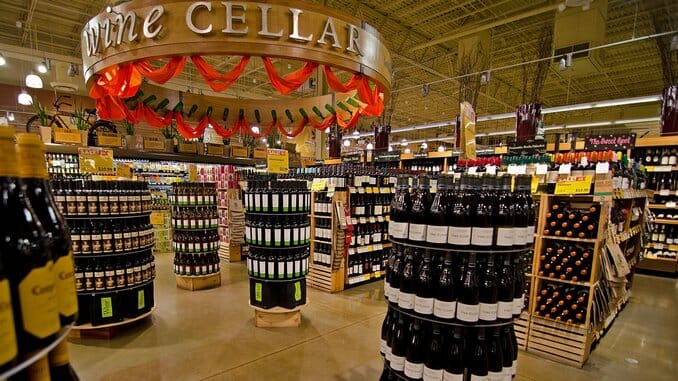Explore the Wines of Chile…At Whole Foods
Photo via Whole Foods
I don’t know about you, but my local Whole Foods has a thoroughly excellent wine section. Really good. Much of the wine there is priced in a way that exemplifies why the place is affectionately (or not) referred to as “Whole Paycheck.” So, good news, bad news.
There are certain regions producing wine that just don’t command the prices that wine from, oh, say, France, commands. Not because they aren’t good, but because they’re just not as well known in the global market. Whole Foods is spotlighting a great example: Chile. From the end of August through the end of October, the entire chain will be featuring a carefully-curated selection of Chilean wines, and the prices will leave extra room in your budget. You know, for more microgreens. Or whatever.
So, Amy, before I head to Whole Foods to splurge on a bunch of vino, what are some things I should know about the wines of Chile?
Dude, I just drink the stuff, really. But:
Chile is a large nation with an extraordinary amount of latitude change from end to end. It is an immense strip on land with the Pacific Ocean on one side and the Andes Mountains on the other. This basically means “Chilean wine” isn’t a thing. There are so many microclimates and mini-regions it would make your head spin. Plus it’s a rapidly growing wine producer, though winemaking is a tradition that goes back to the 1600s there. So the first thing to know is that Chilean wine wears many faces.
Chile’s main grapes: Some 20+ varieties are grown, but what you’re most likely to find are Cabernet Sauvignons, Carmeneres, Merlots, Chardonnays, Sauvignon Blancs, Malbecs and Syrahs. Semillion, Viognier, Torontel, Carignan and Petite Sirah are also fairly abundant.
There are lots of great wines coming out of Chile but they are becoming especially well known for a distinctive style of Cabernet that leaves behind the high alcohol levels and extreme oakiness that characterize a lot of California Cabs. These wines are light and fresh and clean-tasting, which makes them friendlier for food pairing and for warmer weather.
That said – here’s a sampling of what you can find at your local WF from late August through late October.
Odfjell Armador Sauvignon Blanc 2016
Casablanca Valley, $12.99
A mild-climate valley with a long dry season, Casablanca has some great spots for growing Sauvignon Blanc. These lower-yield grapes come from granite soils and Pacific breeze exposure, so expect good, crisp minerality and the more nuanced, strait-laced style of Sauv Blanc (if you are a New Zealand-style gooseberry-kiwi-smoothie kind of SB lover, this wine might confuse you). Hand-picked at 22 Brix and whole-cluster crushed, the wine is fermented in stainless steel, resulting in a pale straw color with green reflexes, and a grassy, herbaceous nose (hay, lemongrass, citrus peel and fresh leaves). Super brisk, high minerality, long finish. Lemon and grapefruit dominate the palate. A great hot-weather wine.
Autoritas Pinot Noir 2014
Valle Central, $7.99
A ruby-colored Pinot with a ripe, rounded bouquet (raspberry, cherry, a little vanilla). Ruby red; clean and bright. Fresh, soft, harmonious, with a pleasant silky finish. An unusually decent red for sushi, but also a good draft pick for pasta dishes and mild fish. Like many fruity Pinot Noirs, this one’s also a friend to cheese (goat, especially, in my opinion – your mileage may vary)
Boya Pinot Noir 2014
Leyda Valley, San Antonio Valley, $14.99
Leyda Valley is a sub-region of the San Antonio Valley, located between the coastal mountains and the Pacific. Poor soils and a dry climate throw the kind of gauntlet grapes seem to appreciate. Pinot Noir isn’t generally a wine that expresses a lot of saline notes in my experience (but my experience is more concentrated in the northern hemisphere, so this was interesting!) – Boya is a distinctly marine Pinot. If you want a red for the beach, or one that will fool you into thinking you’re at the beach, consider this one. Harvested young, aged relatively briefly in older barrels and gravity-decanted, this is a bright, lower-alcohol wine that lends itself well to food pairing. It has an intense nose (florals and tart cherry) and a supple, clean finish that’s long on berries.